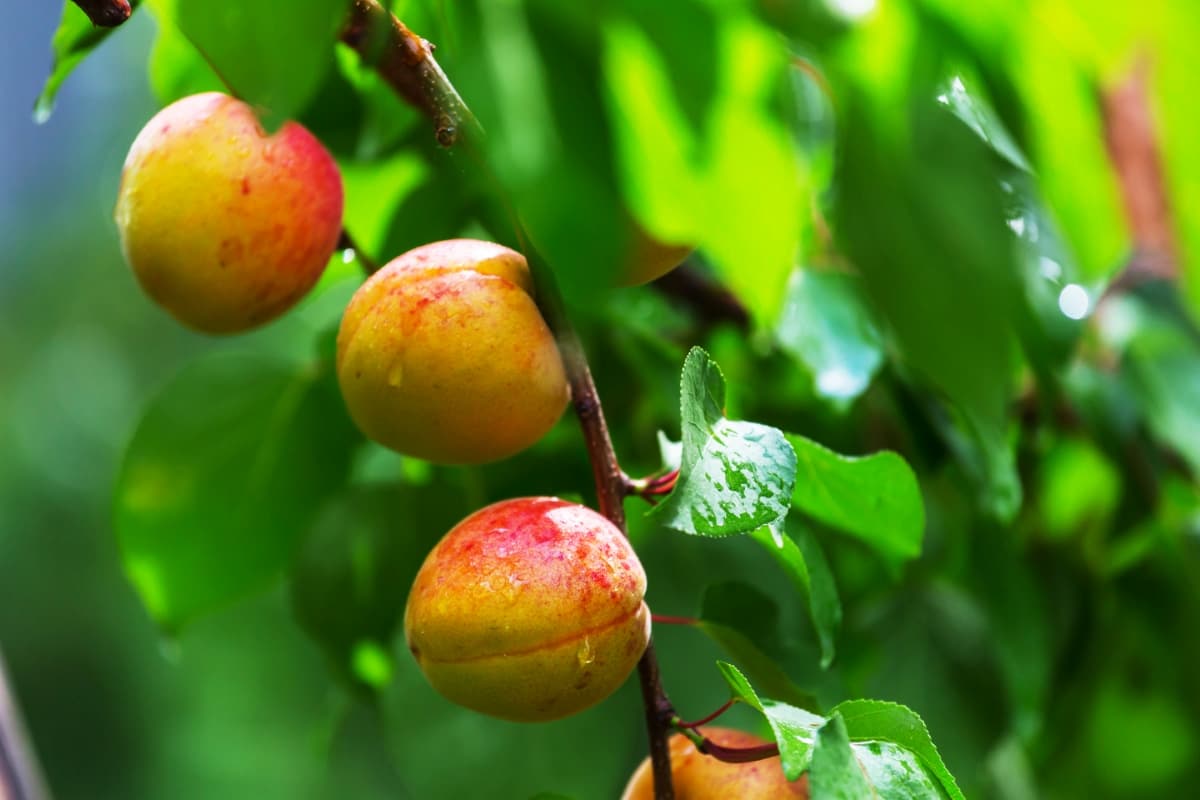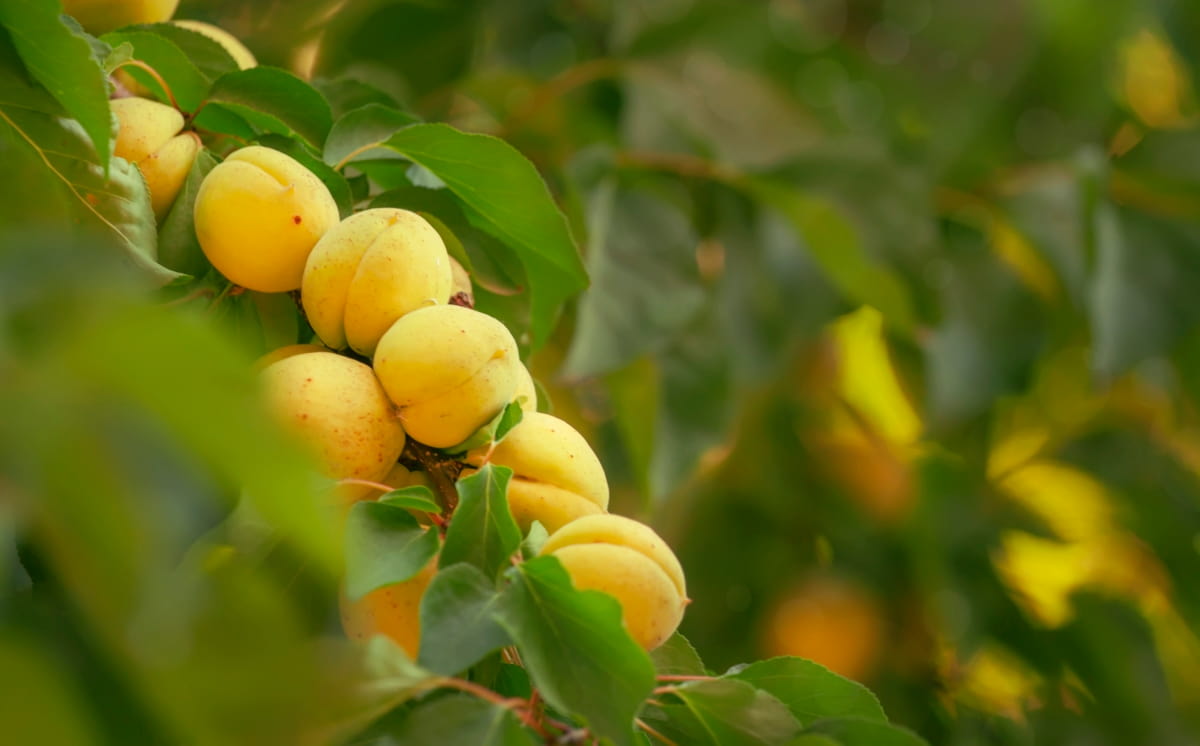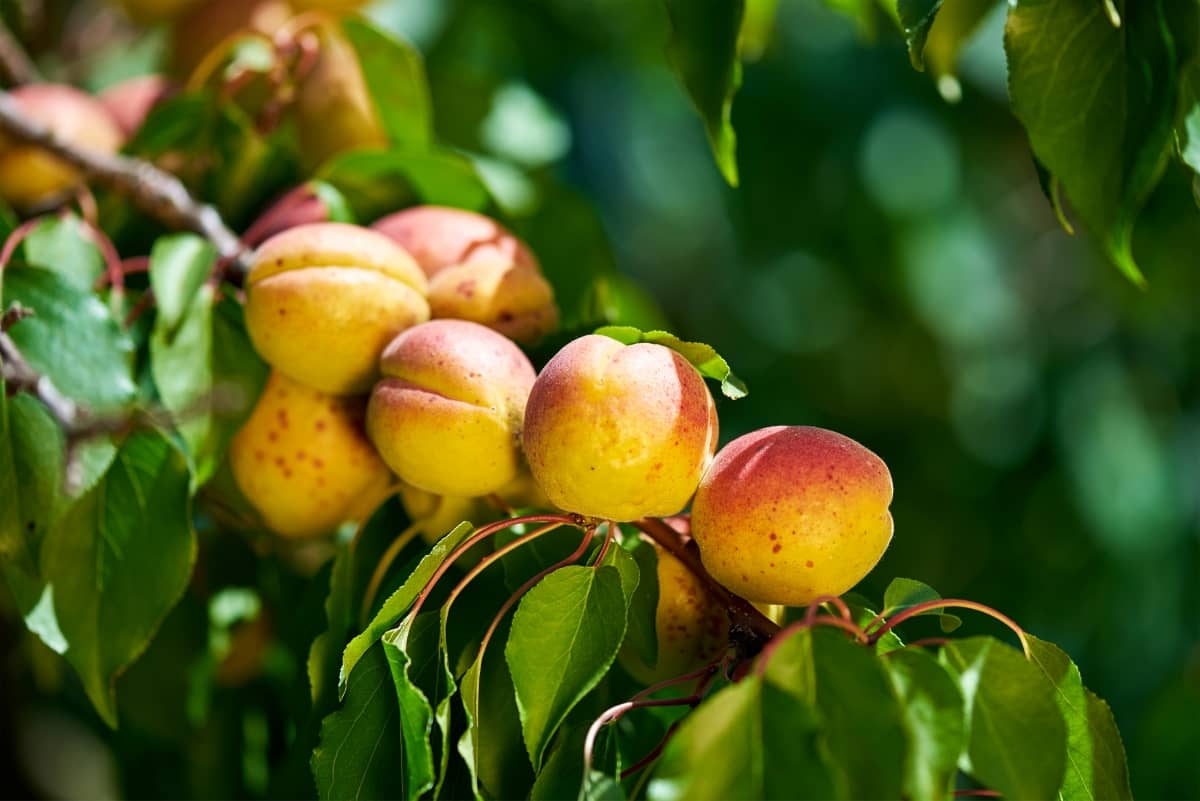Apricot farming in a greenhouse is an innovative and sustainable approach to cultivating this beloved fruit. With the ability to control climate conditions, growers can provide Apricot trees with the ideal environment for optimal growth and productivity. Farmers can protect their Apricot trees from extreme weather conditions such as frost, hailstorms, or excessive heat in a greenhouse setting.

Growing Apricots in a controlled environment allows year-round cultivation regardless of seasonal limitations. By manipulating temperature and light levels, farmers can mimic favorable conditions even during off-seasons when outdoor farming may be challenging or impossible.
Apricot Farming in Greenhouse
Advantages of Growing Apricots in Greenhouse
Growing Apricots in a greenhouse offers numerous advantages that can significantly enhance the success and productivity of your farm. One major advantage is the ability to control the climate within the greenhouse. Unlike traditional open-field farming, you have complete control over temperature, humidity, and light exposure. This allows you to create optimal conditions for Apricot growth throughout the year.
Furthermore, growing Apricots in a greenhouse protects against adverse weather conditions such as frost or excessive heat. Apricot trees are sensitive to sudden changes in temperature, which can negatively impact their fruiting potential. A greenhouse can shield your plants from extreme weather and ensure consistent growth.
Moreover, greenhouses offer better pest and disease management options than open-field farming. The enclosed structure is a barrier against common pests like aphids or birds that may damage fruits or eat buds before they develop into flowers. Additionally, it reduces exposure to diseases transmitted through soil-borne pathogens.
Challenges of Apricot Farming in Greenhouse
Apricot farming in a greenhouse comes with its fair share of challenges. One major challenge is ensuring proper pollination. Unlike outdoor Apricot trees that rely on insects and wind for pollination, greenhouse-grown Apricots require manual assistance to transfer pollen from male flowers to female ones. Another challenge is managing temperature and humidity levels within the greenhouse.
Apricots thrive best when exposed to cool temperatures during winter dormancy and warmer temperatures during fruit development. Maintaining these ideal conditions can be tricky, especially in regions with extreme weather fluctuations. Disease prevention is another hurdle faced by Apricot growers in greenhouses. The controlled environment in a greenhouse can create favorable conditions for diseases like powdery mildew or bacterial spots.
Regular monitoring, proper sanitation practices, and timely application of fungicides are crucial to prevent disease outbreaks. Pest management also poses a challenge for Apricot farmers in greenhouses. Aphids, spider mites, or scale insects can quickly infest the closed environment of a greenhouse if not properly controlled. Integrated pest management strategies involving biological controls and careful monitoring are essential to keep pests at bay.
Climate Control for Apricot Farming in Greenhouse
- Temperature management: Maintaining an ideal temperature range is crucial for Apricot plants. During the daytime, aim for temperatures between 21-27°C; at night, keep it around 15°C to promote flower bud development.
- Ventilation: Proper ventilation helps regulate temperature and humidity levels inside the greenhouse. Install vents or fans to allow fresh air circulation and prevent excessive heat buildup.
- Humidity control: Apricots thrive in moderate humidity at around 50-60%. Use misters or humidifiers to maintain adequate moisture without causing excessive dampness that can lead to disease issues.
- Light exposure: Apricots require full sunlight for optimum fruit production. Ensure your greenhouse has ample natural light, or supplement it with artificial lighting.
- Shading: In hot climates, shading becomes essential to protect Apricot trees from scorching sun rays during peak summer months. Consider using shade cloth or applying shading paint on greenhouse panels.
In case you missed it: How to Stop Flower and Fruit Drops in Apricot Trees: Prevention and Control Methods

Soil and Nutrient Management
- Soil Composition: Select well-draining soil with good water-holding capacity. Apricots prefer slightly acidic soils, so aim for a pH level between 6.0 and 7.0.
- Soil Enrichment: Enrich the soil with organic matter to improve its fertility and structure before planting. This will provide essential nutrients over time.
- Nutrient Balance: Conduct regular soil tests to determine nutrient deficiencies or imbalances that might hinder Apricot growth. Adjust the fertilizer application accordingly, ensuring a balanced blend of nitrogen (N), phosphorus (P), and potassium (K).
- Water Management: Monitor moisture levels closely, as excessive irrigation can lead to root rot, while insufficient watering may cause stress on the plants.
- Cover Crops: Consider planting cover crops like clover or vetch during off-seasons as they help control erosion, fix nitrogen in the soil, and enhance overall soil health.
- Mulching: Apply organic mulch around the base of Apricot trees to retain moisture, suppress weed growth, regulate temperature fluctuations in the root zone, and promote beneficial microbial activity.
Pest and Disease Control
Regarding Apricot farming in a greenhouse, pest and disease control is crucial and requires careful attention. The controlled environment of the greenhouse may provide some protection against pests and diseases, but proactive measures are still necessary to ensure healthy Apricot plants.
Regular monitoring is one of the best pest and disease control practices in Apricot farming. Keep a close eye on your plants to catch any signs of infestation or infection early on. This will enable you to take prompt action and prevent the problem from spreading. Implementing good sanitation practices is also important. Remove fallen leaves or debris from the greenhouse regularly, as they can harbor pests and pathogens.
Disinfecting tools and equipment between uses can also help prevent the spread of diseases. Using biological controls can be an effective approach to managing pests in an eco-friendly manner. Beneficial insects like ladybugs or predatory mites can help keep populations of harmful pests under control without resorting to chemical pesticides.
Regularly inspect your plants for signs of common Apricot diseases such as bacterial spot or brown rot. Prompt removal and destruction of infected plant material can help prevent further spread within the greenhouse. Proper crop rotation techniques can also aid in preventing recurring pest problems by disrupting their life cycles. When planning your greenhouse layout, consider rotating crops with different families to minimize pest buildup over time.
Pruning and Training Techniques
Pruning and training techniques play a key role in cultivating Apricots in greenhouses. By properly managing the growth and structure of Apricot trees, farmers can maximize yields and ensure optimal fruit quality. One important technique is to prune the trees during their dormant period, typically in late winter or early spring. This helps remove dead or diseased branches, improves air circulation within the canopy, and allows sunlight to reach all tree parts. It also encourages new growth and promotes better fruit production.
In case you missed it: Essential Apricot Tree Care Practices for Healthy Trees and More Yields

When pruning Apricot trees, it’s essential to follow proper cutting techniques. Make clean cuts just above a bud or lateral branch junction at a slight angle. Avoid leaving stubs as they can invite disease and pests into the tree. Training Apricot trees against trellises or support structures is another effective practice. This method helps manage tree height, creates more space for air movement between plants, facilitates easier pest control measures, and makes harvesting more accessible.
Irrigation and Water Management
- Drip irrigation: Using drip irrigation systems is highly recommended for Apricot cultivation in greenhouses. This method delivers water directly to the plant’s root zone, minimizing evaporation and ensuring efficient water usage.
- Timing: Watering should be done early or late in the evening, and allow foliage to dry before nightfall, reducing disease risks.
- Monitoring soil moisture levels: Regularly check the moisture content of the soil using sensors or by manually testing it with your hands. Apricots prefer moist but not saturated soil, so adjust watering frequency accordingly.
- Mulching: Apply organic mulch around the base of each tree to conserve moisture and prevent weed growth, which competes with Apricot trees for water resources.
- Rainwater harvesting: Consider collecting rainwater from greenhouse roofs and storing it later during dry periods. This practice reduces reliance on freshwater sources and can help maintain consistent hydration levels.
Harvesting and Post-Harvest Handling
Harvesting Apricots in a greenhouse requires careful timing and attention to detail. When perfectly ripe, the fruits should be gently handpicked to avoid damage. Handling the Apricots carefully during harvesting is important, as they have delicate skin that can bruise easily. Once harvested, handling and storing the Apricots for post-harvest handling is crucial.
They should be sorted and graded based on size, color, and quality. Any damaged or diseased fruits should be removed from the batch to prevent spoilage. Proper packaging is crucial for preserving the freshness of Apricots after harvesting. The fruits can be packed into ventilated crates or trays that allow air circulation while protecting them from physical damage.
In case you missed it: How to Grow Apricot Organically: A Step-By-Step Guide with Simple Steps

It’s important to avoid overpacking or stacking the crates too high, as this can lead to bruising and rotting. Temperature control is another important aspect of post-harvest handling. Apricots should ideally be stored at temperatures between 0-2°C with humidity levels around 85%. This helps prolong their shelf life and maintain their flavor and texture.
Conclusion
The controlled environment of a greenhouse provides optimal conditions for Apricot cultivation, allowing farmers to mitigate unpredictable weather patterns and protect their crops from pests and diseases. This ensures consistent quality and opens new opportunities for year-round production.
Apricot farming in a greenhouse offers numerous advantages, including extended growing seasons, protection from adverse weather conditions, and the ability to control environmental factors. By overcoming the challenges associated with this cultivation method and implementing best practices, farmers can maximize yield and quality.
- Feed Your Flock for Less: Top 10 Tips to Save on Chicken Feed
- Ultimate Guide to Ossabaw Island Hog: Breeding, Raising, Diet, and Care
- Hatching Answers: The Top 10 Reasons Your Chickens Aren’t Laying Eggs
- Eggs and Economics: Breaking Down the Cost of Raising Backyard Chickens
- Defend Your Greens: Proven Methods to Keep Iguanas Out of Your Garden
- Ultimate Guide to Cinnamon Queen Chicken: A Comprehensive Guide for Beginners
- Ultimate Guide to California Tan Chicken: Breeding, Raising, Diet, Egg-Production and Care
- Ultimate Guide to Marsh Daisy Chicken: Breeding, Raising, Diet, and Care
- 10 Types of Chicken Farming Businesses You Can Start for Profits